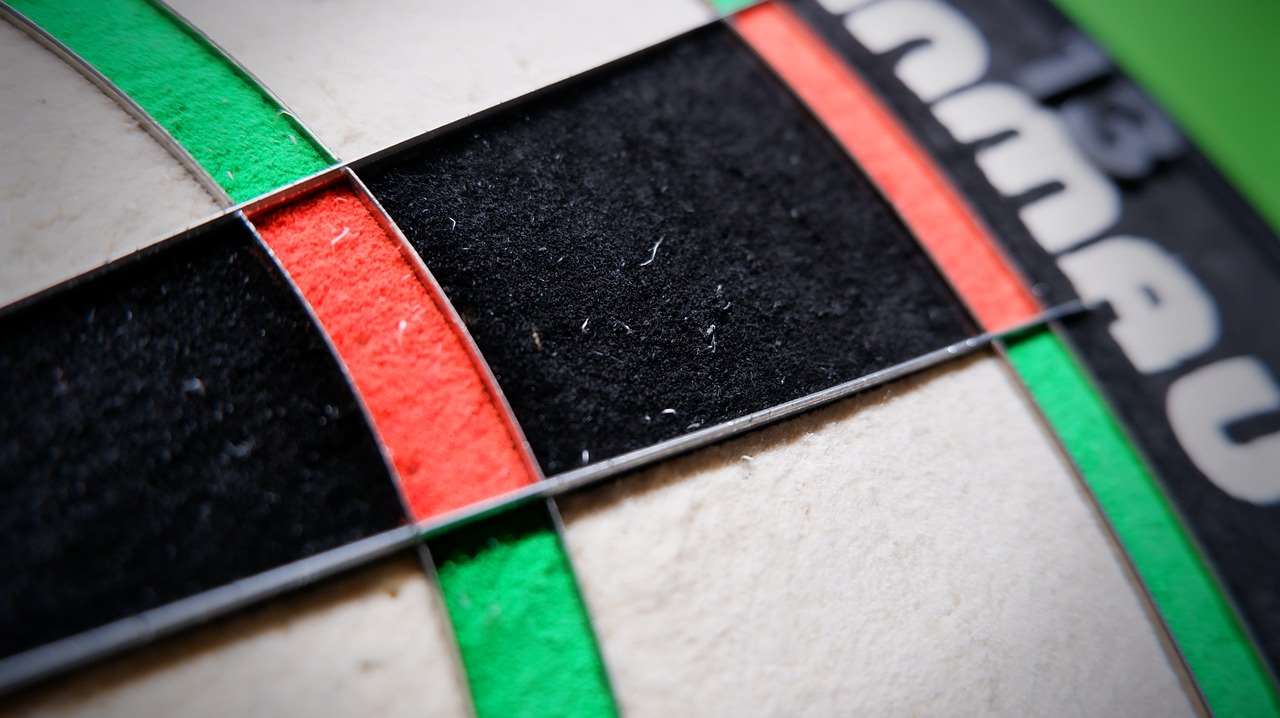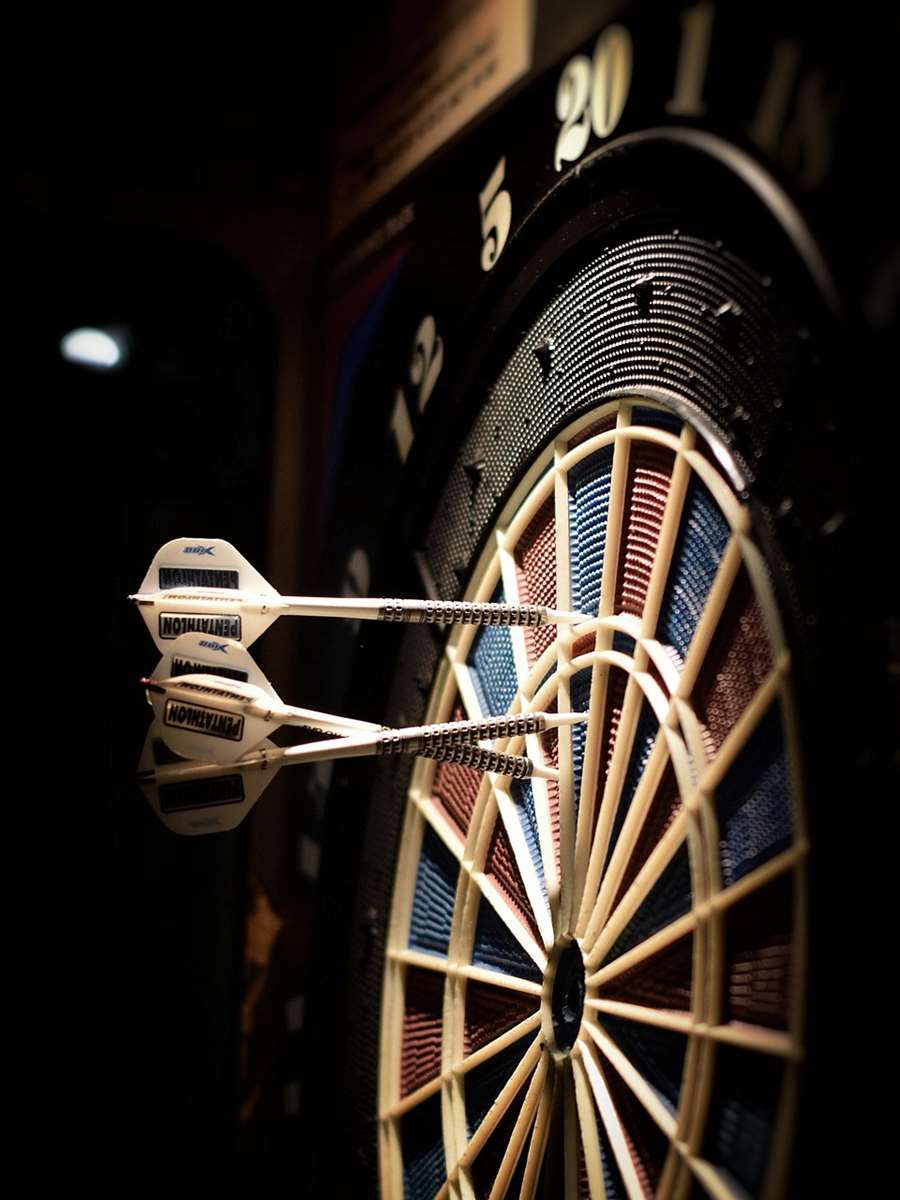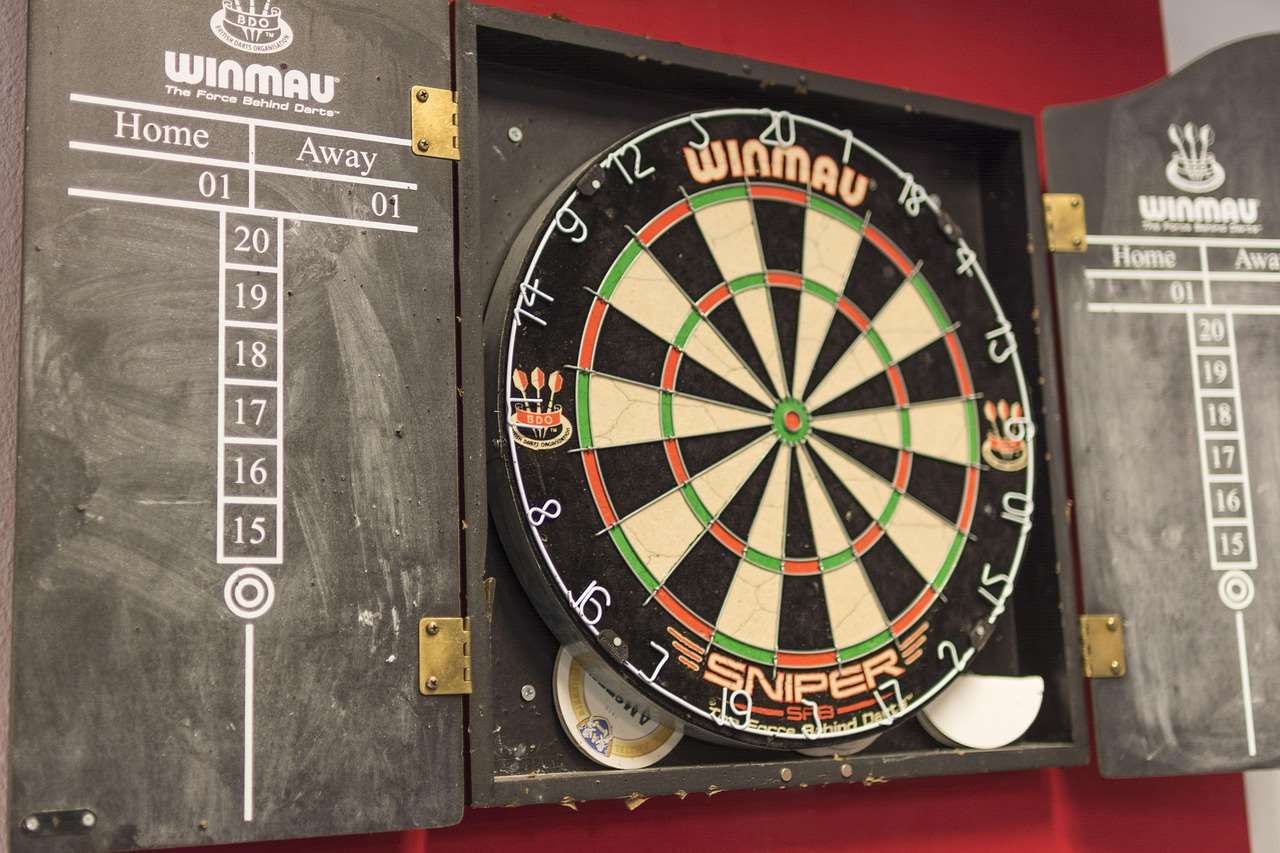Navigating the world of darts can be tricky, especially the checkout rules! This guide provides simplified checkout rules for beginner dart players, focusing on the easiest and most reliable methods to finish the game. You’ll learn essential combinations, strategic tips, and ways to practice, making you a checkout pro in no time.
⚠️ Still Using Pen & Paper (or a Chalkboard)?! ⚠️
Step into the future! The Dart Counter App handles all the scoring, suggests checkouts, and tracks your stats automatically. It's easier than you think!
Try the Smart Dart Counter App FREE!Ready for an upgrade? Click above!
Understanding the Basics of Checkout Rules
Before diving into simplified checkout rules for beginner dart players, it’s essential to understand the fundamental principles. In most standard dart games like 501, the goal is to reduce your score from 501 to exactly zero. The crucial element is that you must finish on a double. This means your final dart must land in a double segment of the board. Understanding this double-out rule is the first step to mastering the game. Getting to zero with your last dart hitting a double is the key to claiming victory. If you go below zero or don’t finish on a double, that round doesn’t count and your score reverts back to what it was at the start of that turn. Remember also that you can’t finish on a single one point, or any single-point number. This rule creates both strategy and challenge, and makes hitting those doubles all the more rewarding! Many beginner dart players find the double-out rule the most confusing aspect initially, but with practice, it becomes second nature.

Many different strategies exist to make sure that you have a good opportunity to finish the game. Some people prefer to focus on getting their score down as fast as possible, with less concern on their final numbers. Other people prefer to have a more controlled approach, and try to steer themselves to an easier finish. Both strategies are viable, but beginners will usually find that its easier to just try to get their score down as fast as possible, and then think about the checkout when they get closer. A good idea is to know what your easiest checkout number is, and try to steer your score towards that if possible.
Why the Double-Out Rule Matters
The double-out rule adds a layer of strategy to the game. It’s not simply about scoring the highest number of points possible. You also need to carefully plan your final throws to set yourself up for a successful double. Consider this example: if you have 32 left, you’ll need to hit double 16 to win. But if you accidentally hit a single 16 with your first dart, you’ll then have 16 left. This can be an advantage, as double 8 is an easy double to hit. If you have a total of 2 remaining, you’ll need to hit double 1 to win. Many beginners find these smaller numbers difficult to hit consistently, which highlights why finishing on a double is more difficult than it sounds!
Easy Checkout Combinations for Beginners
Focusing on a few key combinations can significantly simplify checkout rules for beginner dart players. These are reliable and relatively easy to hit with practice. Start with these:
- 40: Hit a single 20, then double 10.
- 32: Double 16 (a classic!).
- 20: Double 10.
- 16: Double 8.
- 8: Double 4.
- 4: Double 2.
- 2: Double 1.
These are the easiest combinations to remember and aim for. As you gain confidence, you can expand your repertoire. A related skill to develop is understanding Basic Darts Fundamentals for Beginners. With a solid base in throwing technique and understanding the basic rules, checkout success will naturally follow.

It’s important not to get discouraged if you don’t hit the double straight away. Even experienced dart players miss doubles. The key is to keep practicing and developing a consistent throwing technique. Try to visualise your dart hitting the target before you throw it. This can help improve your accuracy. You can also adjust your strategy mid-turn if you miss your initial target. For example, if you were aiming for a single 20 to leave 20, but you accidentally hit a single 1, you would be left with 39. Rather than being disheartened, just aim for single 19 to leave you with a simple double 10 checkout!
Strategic Checkout Planning
Beyond knowing the combinations, strategic planning is crucial for mastering checkout. Here are some tips to help you think ahead:
Leaving a Double
Always aim to leave yourself with a number that can be finished on a double. Avoid leaving odd numbers (except for 1, which is not a valid checkout) or numbers that require awkward combinations. Consider scenarios where you might miss your intended target. For instance, if you are aiming to leave yourself on a double 20, it might be better to aim for a single 20 and a double 10, in case you miss the first dart. This can really make a difference as you’re mastering the simplified checkout rules for beginner dart players. One common mistake made by beginners is leaving an odd number such as 7, 9, 11, 13, etc. These are impossible to checkout in one dart, so you should avoid them at all costs.
Understanding Your Strengths
Identify the doubles you are most comfortable hitting. For many, it’s double 16, double 20, or double 10. Try to steer your score towards a number that allows you to finish on one of these preferred doubles. If you are significantly better at hitting one specific double, you might want to always use that to finish. To do this, simply subtract that value from the total value, and then try to hit that value with your previous shot. For example, if you’re great at hitting double 20, you might want to subtract 40 from the total value, and then aim for that number to give you the opportunity to hit the double 20 you want.
Avoiding Busts
A “bust” occurs when you score more points than needed, resulting in a score of less than zero, or one. If this happens, the turn ends, and your score reverts to what it was at the start of the turn. Understanding how to avoid busts is crucial for strategic checkout planning. For example, if you have 41 left, aiming for a single 20 is a good idea, as that will leave you with 21. From here, you can aim for single 1 to leave 20 to finish. However, if you are aiming at the 20 section and accidentally hit the treble 20, you would have scored 60, which would result in a bust. Therefore, it’s important to think ahead and try to minimize the risks.

Practice Drills for Checkout Mastery
Consistent practice is the key to mastering simplified checkout rules for beginner dart players. Here are some effective drills:
- Double Practice: Focus solely on hitting doubles. Start with the easiest doubles (1, 2, 4) and gradually work your way up to higher numbers.
- Checkout Scenarios: Simulate game situations. Start with scores like 40, 32, 20, and 16, and practice finishing them consistently.
- Around the Clock Doubles: Go around the dartboard, attempting to hit each double in order. This drill improves accuracy and consistency.
Even a short practice session of 15-20 minutes each day can make a significant difference. Track your progress and celebrate your improvements. You can also check for some Fun dart game variations with modified rules to keep your practice engaging and enjoyable.
Utilizing Checkout Charts
Checkout charts are valuable tools for beginners. They visually display common checkout combinations for various scores. You can find printable charts online or create your own. Having a chart handy during practice can help you quickly learn and memorize the best checkout options. Some charts also include the odds of successfully checking out from specific numbers, which can also inform the beginner when they are choosing what shot to aim for.
Advanced Checkout Strategies (For Later!)
While the focus here is on simplified checkout rules for beginner dart players, it’s helpful to have a glimpse of more advanced strategies for when you’re ready to level up. These include:
Two-Dart Checkouts
As you become more proficient, you’ll start learning two-dart combinations. These involve using one dart to set up the double and the second dart to finish. Common examples include:
- 82: T14, D20
- 84: T20, D12
- 86: T20, D13

Three-Dart Checkouts
Three-dart checkouts are even more complex but offer more flexibility. They often involve using two darts to set up a favorable position for the final double. Understanding these combinations requires more practice and a deeper understanding of the dartboard.
Thinking Ahead
Advanced players think several throws ahead, anticipating potential misses and planning accordingly. They adapt their strategy based on how each dart lands, always striving to leave themselves in the best possible position to finish. They might intentionally score less than their maximum potential, as that might leave them an easier number to check out from.
Dealing with Common Challenges
Learning to checkout involves overcoming several common challenges. Here’s how to address them:
Nerves and Pressure
Many players experience nerves when they’re close to checking out, which can affect their accuracy. Practice under pressure by playing against opponents or setting goals for yourself. Visualizing success and taking deep breaths can also help calm your nerves. It’s very important to maintain your normal throwing rhythm when you are trying to finish. If you try to over-think it, it will often make it harder to succeed. Try to approach each shot the same way as you would any other.
Inconsistent Doubles
Inconsistent doubles are a common frustration. Focus on your technique, grip, and stance. Experiment with slight adjustments until you find what works best for you. Practice the “around the clock doubles” drill to improve consistency across all doubles. There’s no quick fix for this, it just takes consistent practice.
Mental Blocks
Sometimes, players develop mental blocks for certain numbers or doubles. Identify the numbers that cause you the most trouble and dedicate extra practice to them. Break down the problem into smaller, more manageable steps. Sometimes it can help to visualize yourself hitting the double before you throw. You may find that you can clear your block by doing this.

Adapting the Rules
If you’re playing with complete beginners, you might consider Adapting darts rules for beginners to make the game more accessible and enjoyable. For instance, you could temporarily remove the double-out requirement, allowing players to finish on any number. You can also Modify rules for mixed-level dart players so the beginners aren’t at a disadvantage compared to more experienced players. This can help to build confidence and encourage them to keep playing. As they improve, you can gradually introduce the standard rules.
Another adaptation can be using a shorter version of the 501 game. For example, instead of starting at 501, start at 301 or even 201. This means that the game will be over quicker, which makes it easier to keep the attention of beginner players, and also gives them more opportunity to win games. This can also make them more likely to continue practicing and improving.
Conclusion
Mastering simplified checkout rules for beginner dart players is a journey that requires practice, patience, and a strategic mindset. By focusing on easy combinations, planning your throws, and addressing common challenges, you can significantly improve your checkout game. Remember the key takeaways: Always aim to leave a double, understand your strengths, and avoid busts. Now, grab your darts, start practicing, and enjoy the thrill of hitting that winning double!
Ready to take your dart game to the next level? Find a local darts league or club and put your newfound skills to the test!
Hi, I’m Dieter, and I created Dartcounter (Dartcounterapp.com). My motivation wasn’t being a darts expert – quite the opposite! When I first started playing, I loved the game but found keeping accurate scores and tracking stats difficult and distracting.
I figured I couldn’t be the only one struggling with this. So, I decided to build a solution: an easy-to-use application that everyone, no matter their experience level, could use to manage scoring effortlessly.
My goal for Dartcounter was simple: let the app handle the numbers – the scoring, the averages, the stats, even checkout suggestions – so players could focus purely on their throw and enjoying the game. It began as a way to solve my own beginner’s problem, and I’m thrilled it has grown into a helpful tool for the wider darts community.